POST PRODUCTION: STATE OF THE INDUSTRY 2024
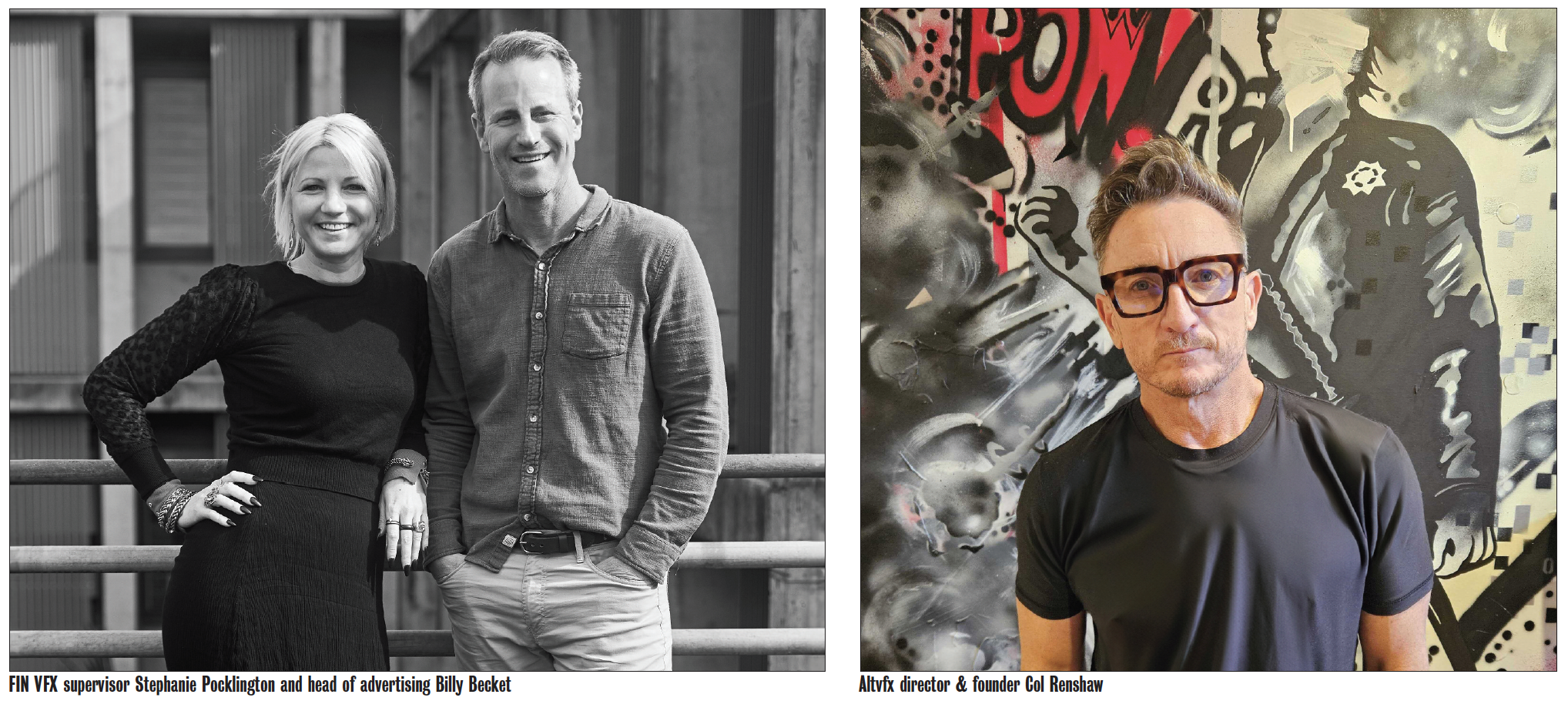
A cautious economic mood, resulting in the slowdown of long format content and an overall tightening of budgetary belts, has placed a pressure string around the local post production community. Yet amidst a year of general uncertainty, the creation of exceptionally crafted work and some other surprising silver linings have come out of unsure times. Australia’s top houses speak to Campaign Brief on how creativity, resourcefulness and resilience go a long way.
For many post companies, it’s been a “mixed bag” style of year in terms of brief deliverables, budget scopes and talent employment opportunities.
Heckler co-founder and executive creative director Jamie Watson confirms the award-winning post house has worked with a blend of top tier agencies and clients directly on a diverse range of eye-catching projects.
Says Watson: “We’ve seen a mixture of everything. The first half of last year was a bit dry, budget wise, and then the next half was abundant with many projects coming through. Locally, it’s been somewhat of a strange year, and I don’t think you can rely purely on local work alone, however, since we are based in several markets, we get calls from all over the globe.”
According to Watson, a big challenge for the post industry is a slowdown in longform commissions: “There have been many VFX artists who haven’t had work in a while, following on from the writers’ strike in the United States and the studios no longer commissioning as much work. For example, companies like Disney and Marvel look to be cutting back on the number of films they put out, and Netflix has also tightened its belt – not allowing users to share logins as easily. We also saw Amazon Prime set up in Singapore to commission loads of local work only to shut down six months later. So, the downturn in longform has put pressure on the post industry. It hasn’t affected Heckler too much, but we have witnessed a lot more film-based post professionals returning to work in advertising.”
3P Studio Group creative director Caleb De Leon agrees the Writers’ Strike in the US, along with similar global events trickling down the pipeline, have placed pressure on the post industry.
Says De Leon: “Honestly, and not to state the obvious, but it feels like the general sense of a recession has been the biggest challenge.”
Despite this, the studio received briefs from around Australia, including agencies in Adelaide, Melbourne, Sydney and Queens-land along with international briefs. “We’re hoping to see some more local work come through later this year off the back of opening a shop in New Zealand and our growing international network. We recently compartmentalised the business for this.”
3P Studio primarily works with agencies and clients direct on larger scope collaborations; Monarx Post works predominantly with agencies and production companies for traditional post-production; and DOUBLEPLUSGOOD is its newest brand that specialises in VFX, animation and digital.
It’s also been a real melting pot for Studio Pancho. The studio saw most of its work come through locally and direct to client, bar a large project out of the US. And whilst Studio Pancho managing director Patrick Salter admits budgets haven’t fared too badly this year, he says the volume of the work has been up and down, and each month has been different to the other. Says Salter: “Lumpy is probably the best descriptor I can think of!”
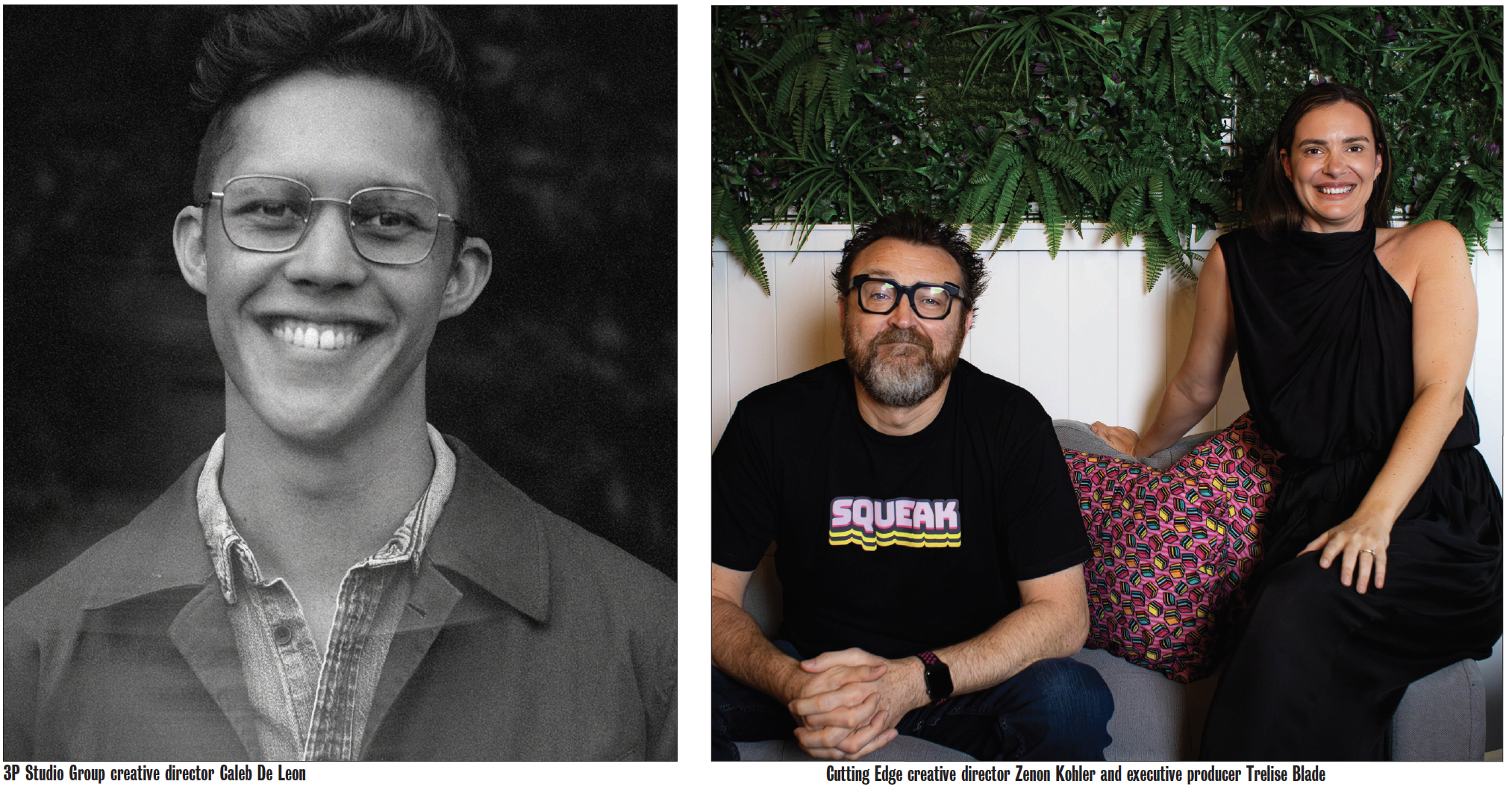
Manimal Post editor, colourist and VFX Ryan Brett also believes it’s been a tough year for most. Working mainly direct with production companies, Manimal Post’s engagement with ad agencies has increased dramatically in the past year as the post shop serves as an extension to their in-house offering. Says Brett: “We have never received so many resumes and reels like we have this year. A lot of freelancers have had extended quite patches as well, but thankfully it seems to be turning back in the right direction. We do our best to engage with young talent where possible, and we get the sense that they have been hardest hit by the lack of work. Post houses have shrunk in size so mentoring opportunities tend to be limited industry wide.”
As rosters have grown, Brett says the amount of work most certainly hasn’t and there’s a sense of internal pressure at production level to get jobs over the line: “They are throwing everything at the pitching process, and we have done more look development and VFX tests at pitch level than ever this year, which is definitely a new trend.”
With an even split of work coming from local and overseas clients, Mighty Nice founder and executive creative director Darren Price admits the studio would love to be doing more local work but as a bespoke animation studio, the team needs to look globally.
Says Price: “We’ve seen a mix of direct to client and agency briefs but most of our work is coming through agencies. Mighty Nice is a Nexus Studios (UK) company. Nexus represents Mighty Nice as directors in Europe, the UK and the US. We also have great direct relationships with local agencies who have strong backgrounds in animation, and we are always happy to open up the dark arts of animation to those who don’t.”
In terms of budgets, Price says the number of deliverables tend to be increasing to cover more online/digital placements: “Australian budgets are generally smaller than those we see from overseas, but we are finding more agencies are wanting to collaborate with us to find an economical solution to their ideas without losing too much of the original creative in the process.”
Whilst most of FIN’s work still originates from within Australia, the studio is seeing a gradual increase in projects from the US, thanks to establishing a presence there several years ago.
Says FIN head of advertising Billy Becket: “Having exposure to multiple regions allows us to more comfortably navigate the ebbs and flows of each market.”
While opportunities for client-direct work are becoming more frequent, the bulk of FIN’s projects still stem from existing relationships with agencies.
Says FIN VFX producer Emily Newbould: “It’s a fair assessment to make that rising interest rates and cost of living pressures have had a flow on effect through the industry and has impacted budgets substantially. The current climate means that we’ve all had to make adjustments to cost structures and collectively collaborate with directors and clients to come up with solutions to these challenges.”
Welcoming work from the Brisbane industry, Cutting Edge’s creative team, Squeak, has seen a rise in projects from interstate agencies and more clients direct.
Says Cutting Edge executive producer Trelise Blade: “We continue to see some large international projects each year, mostly from Japan and the US. Alongside the more typical advertising campaigns, we’ve seen an increase in work angled towards DOOH and digital experiences, as well as social-only campaigns. Mixed in with documentary and series work, it’s certainly kept things interesting for our team.”
Blade also notes a shift over the past few years of agencies and production companies completing their post in-house because of tighter budgets, especially with a heavy focus on quantity of content that has brands trying to maximise the number of deliverables.
“Interestingly, we’ve also seen clients returning from having done so, who can see the value and level of polish that we bring to a project and how we can alleviate a lot of the stress from them having to do it all themselves. We’ve adapted our offerings to be able to work collaboratively for whatever stage of the project we’re a part of. Our entire industry is in the same boat and the great thing about our team is that they will always work with the client to get the best possible creative out of their changing budgets. Our clients are also dealing with tighter budgets and it’s our pleasure to collaborate with them to always get the best.”
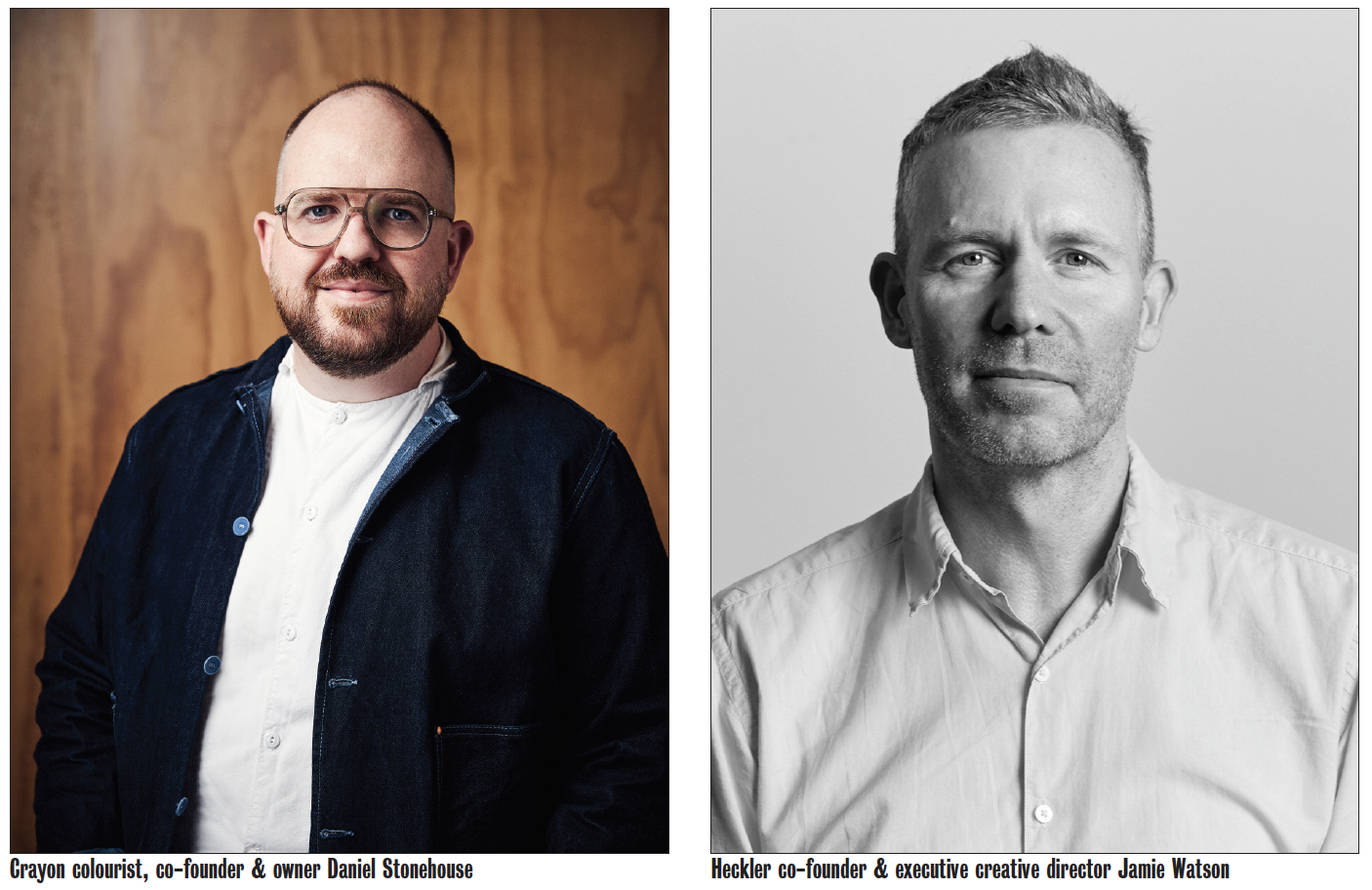
Crayon colourist, co-founder and owner Daniel Stonehouse finds it hard to believe that anyone working in post, production or advertising, would call the past 12 months their favourite.
Says Stonehouse: “The economic mood was cautious to the point of stagnation. Many individuals didn’t have money to spend, mortgage rate pressure or not, and those companies that did have ready resources seemed to feel it would be insensitive to advertise at their usual pace. It was experienced differently by everyone, but I think it wasn’t so much budgets travelling up and down, as there just simply being less work and less projects for everyone to work on. We have seen a steady improvement, and getting over the arbitrary hump of EOFY, I feel, was a good milestone to get past and has many people feeling more optimistic about the future.”
Stonehouse explains his corner of the post industry, colour and finishing, is traditionally hyper localised with a ritual of eyes on screens, bums on seats in suites, and decision makers in the room for the full session: “We’ve invested a lot of research and planning, post Covid, to grow our capabilities beyond the limits of the local – without technical or collaborative compromise. While previously we developed our ability to collaborate and service clients outside of our Melbourne base, in this past year, we’ve also successfully grown beyond the local with our colourist roster.”
An eye on talent
The ongoing evolution of visual effects means Altvfx director and founder Col Renshaw has noted an increased demand for roles in machine learning, AI integration, virtual production and real-time rendering. Renshaw admits the studio is always on the lookout for specialised VFX artists who can bring innovation and efficiency to the team.
Says Renshaw: “We’ve brought on some exceptional new talent this year. Finding the right people is always a challenge, but we’ve noticed a trend toward artists seeking more stability in permanent roles, even as the freelance market remains robust.”
Heckler has been fielding many enquiries related to projects completed using Unreal Engine meaning skilled artists who can operate the real-time 3D creation tool are in demand. The post house made some key appointments this year, bringing on creative director Piotr Stopniak.
Says Watson: “We are thrilled to have Piotr join the Sydney studio to help elevate our creative output and lead the charge in mastering innovative new technology. As a multi-disciplinary artist and specialist in his field, Piotr’s superpower lies in his ability to bridge the nexus between art and science. We are excited for him to push Heckler’s creative boundaries further into new media landscapes.”
Heckler also saw the arrival of Sam Schwier, who joined the Singapore team as new CG lead. He brings over 18 years of experience in the VFX industry and is passionate about creating photorealistic visual effects that wow audiences and bring the magic of movies to life.
Adds Watson: “Sam has worked on an impressive line-up of blockbusters, including iconic series Star Wars, The Avengers and Harry Potter, and in various capacities: from character look development to leading teams to months on set and on location. We are also expanding the team in Singapore and have just hired a new executive producer to help with the growing demand for our services in this part of the world.”
3P Studio Group welcomed two new producers this year. Says De Leon: “It feels like there’s a lot of movement lately – a great migration of talent in and out of permanent roles at studios. I think it’s a little bit of a case of ‘the grass is greener’ from both sides of the fence.”
Yet the silver lining to this tumultuous time in the VFX industry is the incredible wealth of talented VFX supervisors, artists and producers who are suddenly available.
Says Beckett: “FIN has been capitalising on this opportunity by carefully adding key staff members to our team over the past year, making our commercials department stronger than ever. While freelancers still play a vital role in our work, our robust VFX pipeline means that having the best and brightest working in our environment fulltime is going to be most efficient way to manage the team and will naturally produce the best results.”
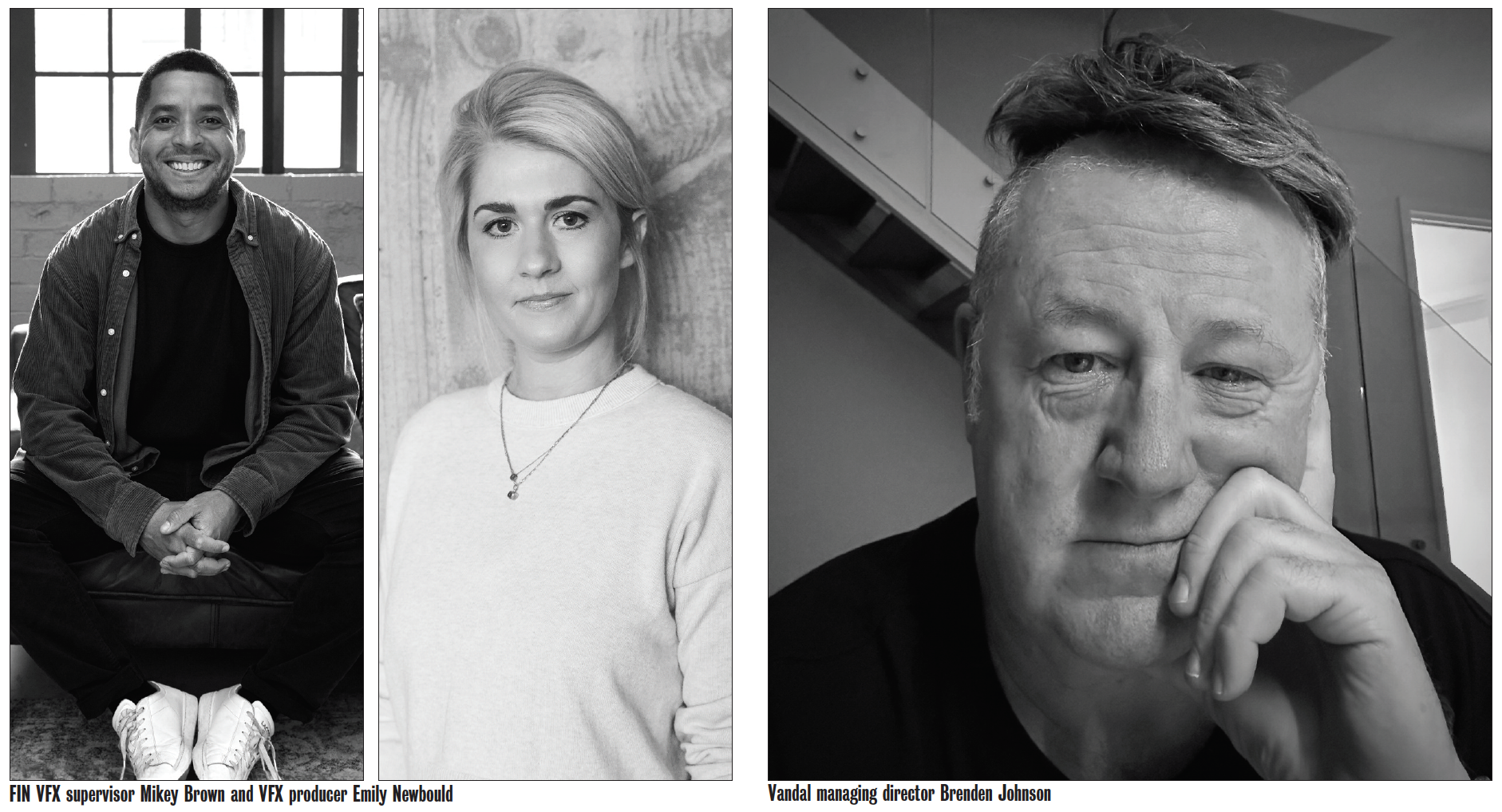
Speaking of positions in demand, FIN VFX supervisor Stephanie Pocklington says: “I’ve seen an increased need for simulation-artist type roles, specifically Houdini based artists, whereas a few years ago I saw more of an influx of character-based work.”
As audiences and clients become more animation savvy, Mighty Nice is noticing more requests for very specific styles – like stop-motion or painterly CGI – requiring strong art direction from multi-skilled, versatile artists. And of course, with the increase in AI tools available, Price says his head of IT has become a technologist and R&D man. This year the studio brought in Matt Taylor (Sixty40/Deloitte Digital) to lead business development, Chloe Marshall (Wunderman Thompson/ Studio Gilay) was added to the production team, and director Mike Lomas (Gramm Studio) joined the creative team.
“Generally, we’ve always worked with a mix of fulltime and freelance talent depending on the project requirements. A lot of our freelancers across 2D and 3D are mentioning it’s been quiet across the industry lately, so we are finding most are readily available if we need to scale up for a project. A couple of our regular freelancers have recently gone fulltime but then others who were full time are now freelancing again – it’s a mixed bag.”
Vandal managing director Brenden Johnson notes with any significant downturn, it’s easier to access talented artists, so it’s not like the “slim pickings we had a few years ago”.
Says Johnson: “With that, we have seen enthusiasm for fulltime employment, providing security, but our fulltime numbers remained as of 2023, and we’re just moving our talent to other areas of the business where we see the growth opportunities.”
He adds that managing expectations has become the central focus of his production team. “In an industry where the stakes are high and the landscape is constantly evolving, our ability to balance these expectations while pushing the boundaries of creativity is what sets us apart. It’s this dedication to both client satisfaction and creative excellence that will continue to drive our success.”
Manimal Post’s in-house editorial team, led by Emily Robb and Denzil Heeger, is becoming highly sought after. Says Brett: “They are talented, and their work speaks for itself, so we are booking them regularly. Our 3D and VFX offering has also been bolstered and we are often engaged for onset VFX supervision and 3D work now.”
Studio Pancho also made some recent hires and is witnessing more talent applying for fulltime roles than in previous years. Says Salter: “A lot of people seem to want fulltime, yet the best people are still few and far between. I think that remains a constant pre and post Covid times.”
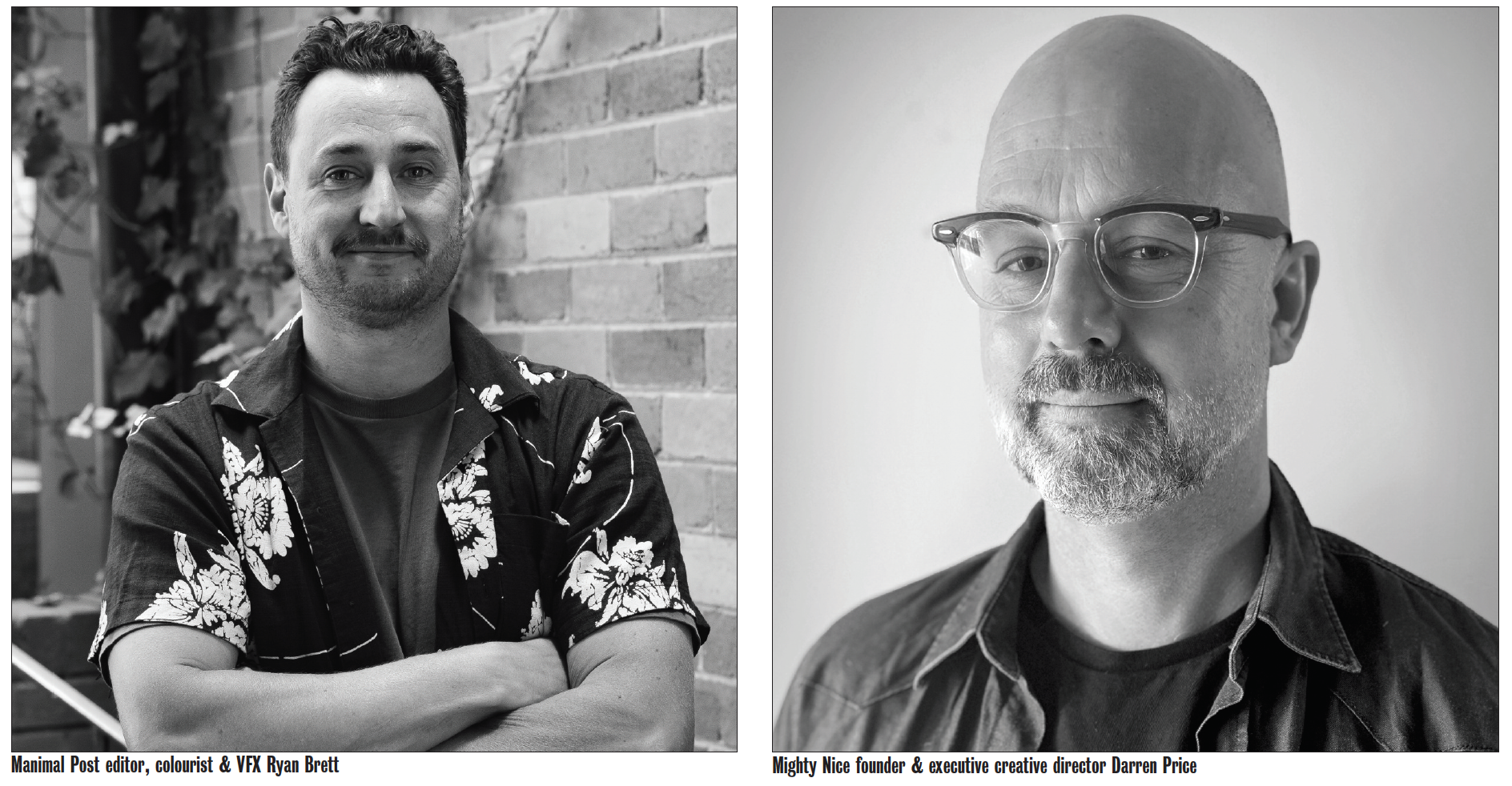
Having been around for 30 years, it’s not the first time Cutting Edge has addressed the impact of a changing economic climate. The studio has always run a tight ship with its fulltime talent and draws on its pool of freelancers when a project requires. Blade says: “We’ve had new hires for editorial and sound, proving these skills are still in demand despite the changing industry. We have certainly noticed an increase in freelancers looking for fulltime employment, but also know those who will ride out the wave because of lifestyle factors.”
Adding both colourists and producers to Crayon’s team over the past year, Stonehouse thinks it’s safe to say both roles are safe: “We’ve added three new colourists to our roster in the past year, with Kali Bateman CSI joining us from Brisbane, Max Ferguson-Hook joining us as part of his move from a highly regarded Soho post house in London, to Auckland, and Niklas Malkin recently joining our roster in Melbourne.”
In a role that swung dramatically from salaried to almost entirely freelance in Australia over the past decade, Stonehouse thinks Crayon’s third-way representation model has a lot of appeal to current freelancers, with its blend of the best aspects of both styles of working.
“With well over 50% of Crayon being parents, we also take pride and care to set work/life boundaries, in an industry that can be particularly unbounded. The support of the producer team, and camaraderie and shared knowledge of other colourists on the roster is difficult to find on one’s own.”
Tech & Trends
According to Cutting Edge creative director Zenon Kohler, AI has been impossible to ignore. The studio has been using AI as a look development tool for a couple of years, and as it rapidly evolves, the team, he says, is along for the ride.
“AI is here to stay and if it helps us create better work, bring it on. However, it’s still just a tool in an extensive digital toolkit and doesn’t replace human creativity and strategic thinking. The best creative ideas often come from thinking outside the box by making subjective associations that aren’t always obvious, whereas AI is limited to its dataset. Perhaps it’s naive to think that these human traits won’t make their way into AI, but for the moment, humans are still in charge.”
FIN VFX supervisor Mikey Brown believes AI can be hugely advantageous: “I have found it incredibly beneficial in situations where it’s not clear-cut how an environment or character might look when reading treatments. Much like previz’s, when done early in the process it’s a great opportunity to refine an idea or trigger something else that everyone can get eyes on as early as possible. Ultimately, the shot will need to be crafted, and I don’t think the tech will replace the artist’s role in that. With TVCs normally running to quite tight turnarounds, it can also greatly reduce the pressure on post allowing for more collaborative time to refine and polish.”
Manimal Post is using AI every day and Brett says the studio is going to great lengths to keep up with the pace of technology. “It’s coming fast and at Cannes this year, it was a major focus for us, and we were lucky enough to see some great speakers working at the forefront of AI innovation. It certainly helped us develop a greater understanding of the current state of play with technology.”
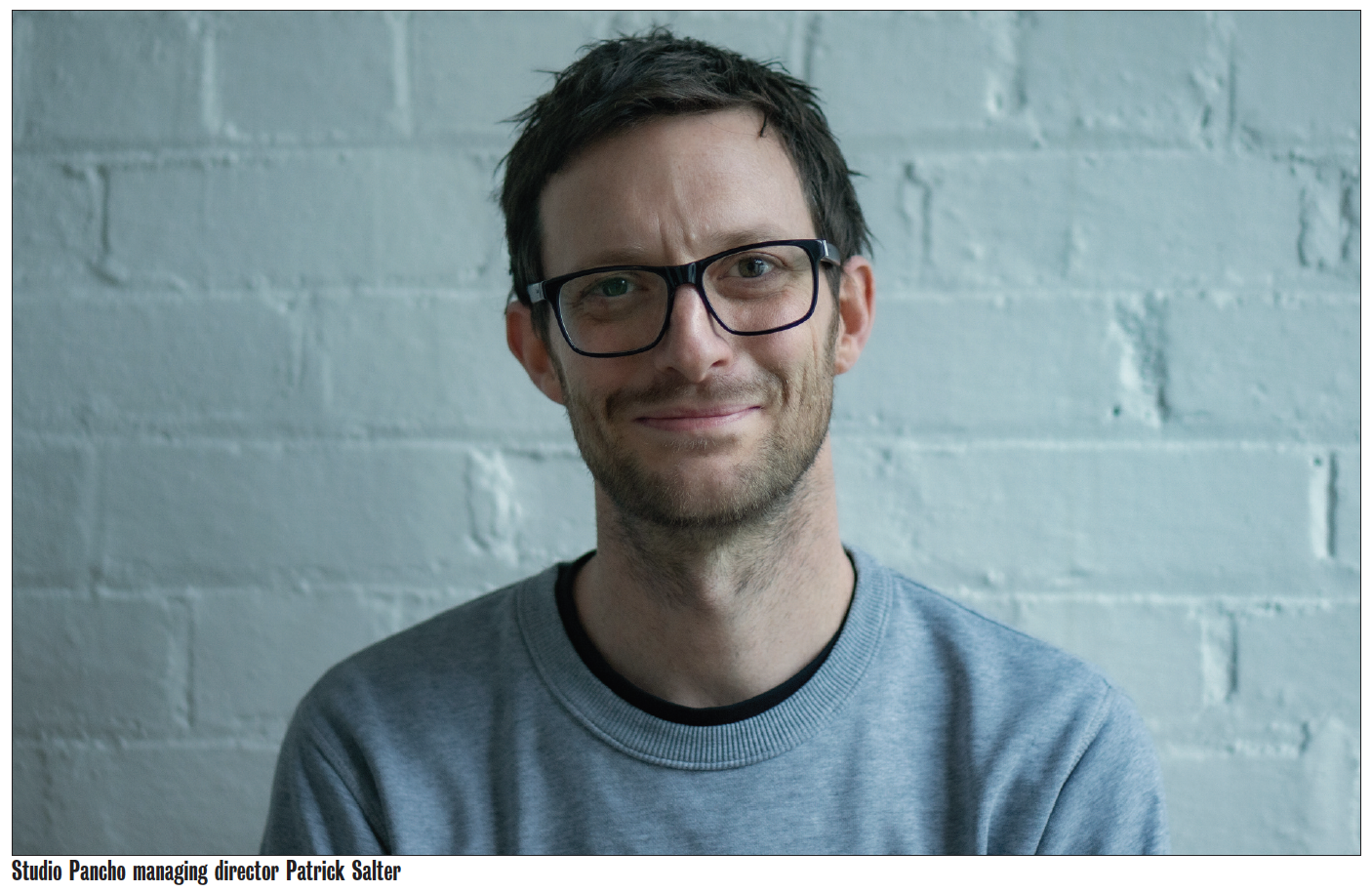
Whilst judging at D&AD in London this year, Heckler’s Watson observed a somewhat more negative reaction to all the AI generated content. “The work that is tactile, rather than ‘hitting a few buttons’ seemed to do the best and was what the judges were gravitating towards. It’s definitely a reaction to all the tools we have been experimenting with this year and it would seem a return to an appreciation for craftmanship bows well in this age of AI.”
Over at 3P Studio Group, De Leon believes AI has also put pressure on artists to hone in on not just their skills, but their creative thinking: “It feels like the needle is swinging towards architects at the moment, not so much the builders. Internally, we’ve been developing some of our own tools to give more time back to our artists to think creatively, instead of allocating their time to mundane tasks.”
At Altvfx, the studio’s pipeline team is diving into AI tools to boost productivity in IO and QC. Renshaw says: “We’re also heavily invested in pushing the boundaries of virtual production, taking it to new levels of creativity and innovation.”
Price at Mighty Nice confirms his artists are using AI to complete some of the more routine tasks like frame extensions, basic image retouching and generating smaller details in environments.
Says Price: “All of our graphics softwares are constantly incorporating AI tools within them and these are making our lives easier every day. However, the main benefit of AI is being able to brief designers and concept artists with better reference imagery so they can spend more time doing their best work with a solid starting point in mind, instead of scrambling to understand exactly what the director is envisioning, then designing it in the time left over.”
While acknowledging AI helps with shortcuts, Studio Pancho’s Salter says the shortcuts taken with it can pose a problem. He explains: “It falls down horribly on fine tuning and art direction, and I disagree it should be used as the first port of call, or for entire averts. There are some conflicting theories about how much AI will go – the same way NFTs and the Metaverse did. While the tech behind it is amazing, the hype overran its useability and meaningfulness. At some stage, all the money being poured into AI will have to generate a return. At the moment, it isn’t doing this for the big tech companies, so who knows what will happen. I’m hopeful it won’t bring down the whole advertising world, but time will tell.”
With a focus on all tech new and shiny, it’s been interesting to see a return in appreciation for more craft-based post techniques. Crayon’s Stonehouse believes the popularity of stop motion animation sits alongside the resurgence of shooting film. He says: “I think it injects a bit of randomness and looseness, chaos and chance into creative projects, that can be missing with more tightly locked down digital processes. The end result can have a touch more humanness to it, ironically, even though humans have ceded control of decision making in the process.”
Price at Mighty Nice agrees: “Stop motion is a magical, tactile and craft driven form of animation. It’s interesting seeing this aesthetic, full of beautiful imperfections, come back in the face of AI and all the perfection it offers. We have had two great jobs recently where we have been digitally recreating a vintage stop-motion style, and it is definitely the best of both worlds. It also helps that I really love stop-mo myself – it’s why I got into this business in the first place. I’ve also been looking at blending 2D and 3D techniques with a strong illustrative style. Painterly CGI that is carefully art directed allows the creative to lead as opposed to the technology. We are using this on our longform project ‘The Grot’ and have seen a lot of interest in exploring this style in stories that can crossover from young adult to adult audiences.”
De Leon at 3P Studio Group also recognises the unexpected benefits of stop motion: “It’s funny actually – we were talking about this in the studio, how more people are trying to find quick and easy ways to make something feel more authentic or add more humanity to projects. For a while, animating on 2’s (having things move on every second frame) was enough to evoke a sense of old-school cell animation; but now stop motion animation is one of those art forms that takes time and craft and there aren’t too many shortcuts! I think that’s something you can feel at the end of a project.”
3P Studio Group has been playing with animating something digitally, but then introducing analogue processes back into the workflow; for example, animating text digitally, then printing out the frames of animation and drawing back over the top with a marker before scanning back into the computer.
Says De Leon: “It sounds tedious, and, in a way, it is, but there is this texture and feel to animation that’s done physically not digitally that really does bring a sense of time, care and craftsmanship to a project that’s hard to replicate. I think we’ll see more of this come through — a rise in traditional art mediums and processes blended with digital workflows.”
Johnson at Vandal sums up: “It’s great to see new work that pays homage to how things were done in the past. Like all timeless techniques, they tend to come back into style, reminding us of the true essence of craft. It’s a clever and creative approach that brings a distinct and refreshing look to any project, adding an element of artistry that’s hard to replicate or cheat in the process. It would be good to see more clients and projects embrace these classic techniques.”
Read the full article and more in the latest print edition of Campaign Brief, out this week…
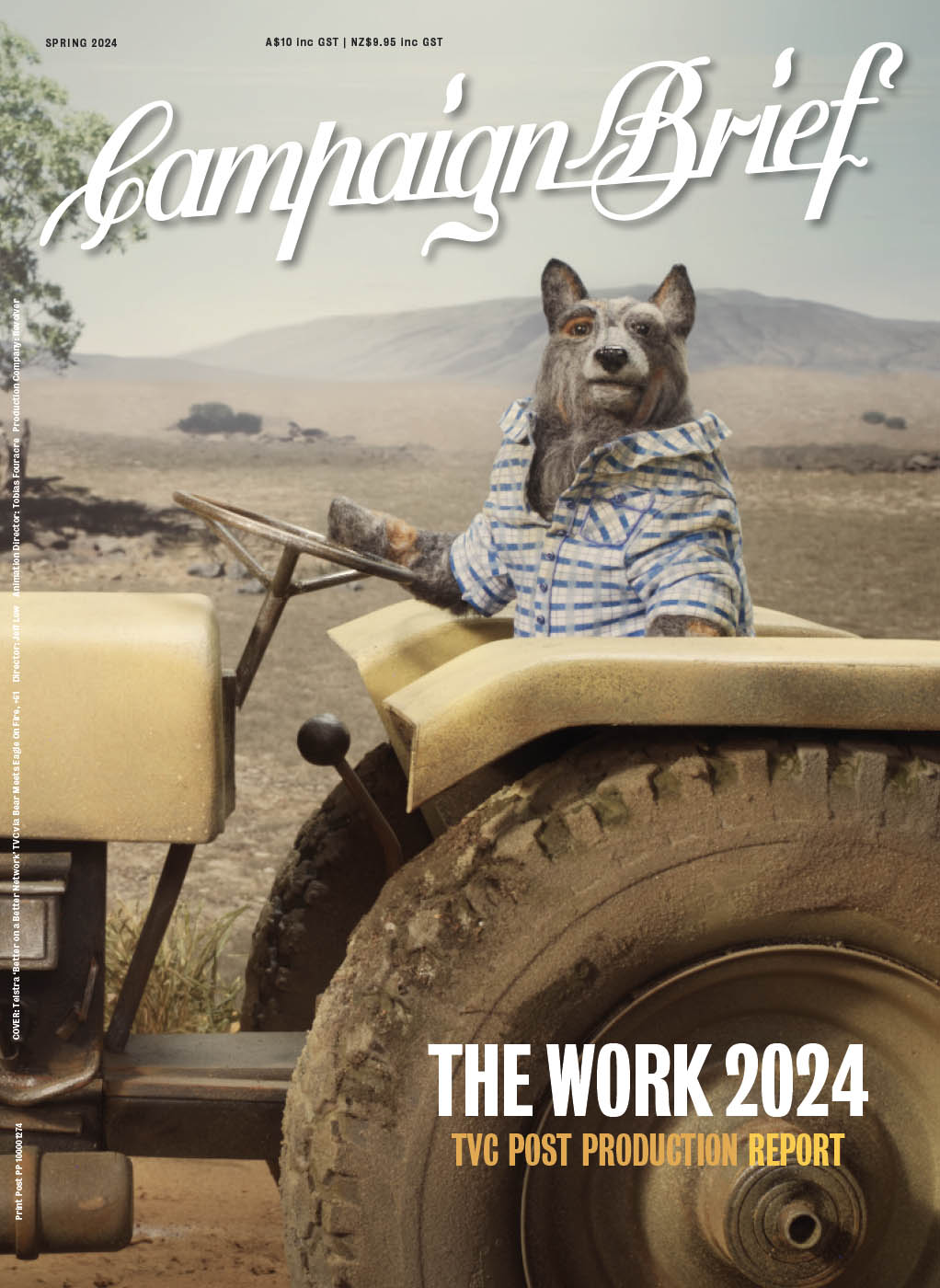

2 Comments
Studio 3P Group. The ones to watch in 2025
Unfortunately, budgets have been shrinking for years.